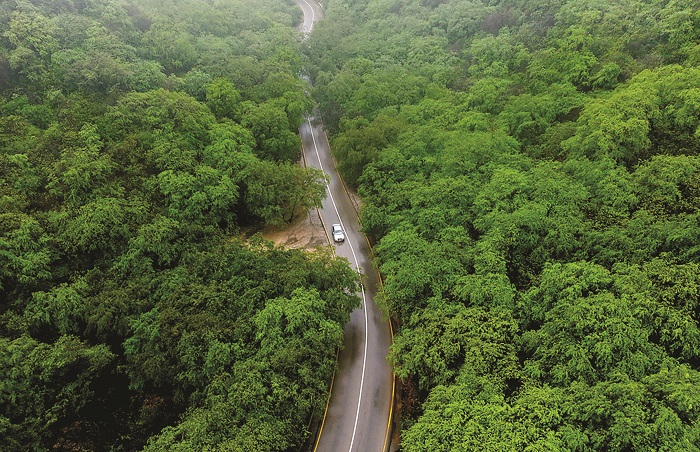
Salalah: Dhofar Governorate has been lashed by continuous rains since the start of the Khareef season. This has led to a drop in temperatures to less than 28 degrees Celsius, in addition to the formation of fog on the mountainous heights.
The Sultanate of Oman is currently affected by varying eastern waves, which are a type of weather conditions that form in tropical and subtropical regions and are laden with humid air masses accompanied by slight decrease in atmospheric pressure, leading to the possibility of rain and thunderstorms.
Regarding the impact of these waves on the Dhofar Khareef season this year, Ahmed bin Salem Ghawas, Director of the Meteorology Department at the Directorate General of Civil Aviation in Dhofar Governorate, said: “This climatic condition increases the amount of rainfall and is a reason for the increase in the rains for this season of the year.”
He added that one of the results that Dhofar Governorate is currently witnessing due to this climatic condition is an increase in the amount of rains of varying intensity, in contrast to the usual rains at this time of year (continuous and intermittent drizzle accompanied by light rain sometimes), in addition to thunderstorms in some parts of the governorate, especially desert areas.
He pointed out that the autumn season is characterised by continuous and intermittent drizzle, sometimes accompanied by light rain, and low horizontal visibility, which may reach less than 1,000 metres in coastal areas, and zero horizontal visibility in mountainous areas.
Low clouds also cover the mountains and coastal areas, where the base of these clouds touches the mountains, forming the dense fog that we see on the mountains, and may reach a height of 200 feet above the ground in coastal areas.
He pointed out that the amount of rain during the autumn season increases in mountainous areas facing the direction of the monsoon winds than in areas parallel to the monsoon winds, and the speed of the southern winds also increases in mountainous and desert areas.
The Director of the Meteorology Department in Dhofar Governorate explained that the scientific name for the autumn phenomenon is (Monsoon), which is derived from the Arabic word “season” that was known to Arab and Omani sailors which helped them in sailing towards the Indian subcontinent in the summer.
He stressed that the main cause of this phenomenon is the monsoon winds caused by the huge seasonal high in the southern Indian Ocean near the island of Madagascar in the southern hemisphere, called the Mascarene High.
This high causes the southwest monsoon winds to blow, which are south easterly in the southern hemisphere along East Africa and turn southwesterly when they cross the equator towards the northern hemisphere, as a result of the Earth’s rotation on its axis and the geography of the Horn of Africa.
He explained that the direction and speed of the southwesterly winds cause the cold currents to rise from the seabed near the coasts of the governorate, causing a temperature difference between the cold sea water and the temperature of the land.
This temperature difference between the sea and the land attracts the monsoon winds towards the governorate, carrying large amounts of water vapour. The warm monsoon winds, loaded with water vapour, come into contact with the cold sea water, which condenses it. The monsoon winds continue their direction towards the mountains, which causes them to be perpendicular and collide with the mountains of Dhofar Governorate.
This causes the air loaded with water vapour to rise higher, which leads to greater and greater condensation of water vapour, forming low clouds that cause drizzle and fog to fall.
It is worth noting that the autumn season, which began astronomically on June 21 and continues until September 21, is characterised by cloudy and rainy weather and moderate temperatures that drop further in the high mountainous areas shrouded in fog accompanied by light rain, making Dhofar Governorate a destination for visitors and tourists from inside and outside the Sultanate of Oman. -With ONA inputs
--